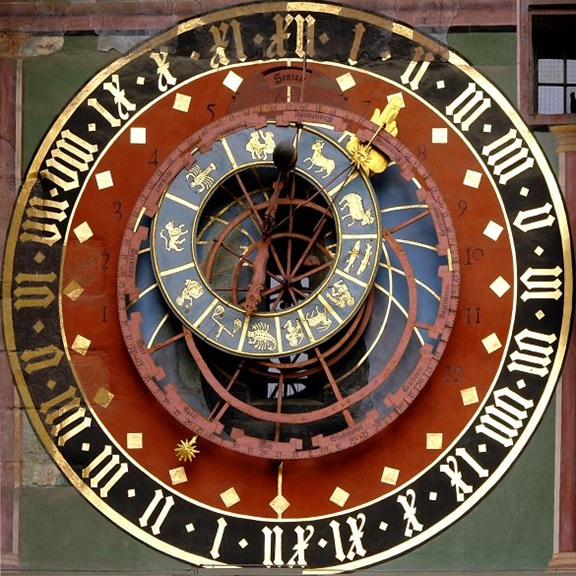Time and Eternity
30 January 2021[Previous post: https://bit.ly/2LHu31w]
As an interpreter of the Christian view of time, Basil the Great reveals to us a new perspective, which leads to a creative, transcendent synthesis. This new perspective, which was more than ancient Greek philosophy and, indeed, human thought in general were able to achieve, is offered by the Church. The Church, not as a worldly, social reality, but as the body of Christ, who ‘is, was and will come’ [10]. As his body, which combines the dimensions of time and incorporates them as a person in the eternal ‘now’ of his presence. Within the Church, remembrance of the past becomes remembrance in Christ. Hope for the future becomes hope in Christ. This is why the life of Christians as members of the Church is nourished with the remembrance and hope in Christ.
The Church brings eternity into the world and extends towards it. Saint Basil observes that the institutions of the Church transfer our minds ‘from things present to things that will be’. He goes on to say that, for example, every time we kneel and then stand up, we testify in practice that ‘we fall down to earth through sin and then, by the loving-kindness of Him Who made us, we are recalled to heaven’ [12]. This simple and expressive statement concerning the spiritual life provides Saint Basil with the occasion to mention the new dimensions within which the life of the faithful unfolds. By accepting the loving-kindness of God as the power which raises us from earth to heaven we, as people, are able to discern new horizons within the straight time-line of history. The eternal, as an expression of God’s love in the world, crisscrosses with the straight time-line of history.

In this way, every moment of the history of humanity and of each individual person acquires limitless breadth and boundless depth, and is presented as an opportunity for communion with the eternal and the transcendent. Eternity is made apparent and intermingles with time. And time becomes a locus of encounter with the eternal, a place where we can experience the end times. Finally, the meaning of time is not exhausted as being a fleeting and irreversible flow, but lies in the opportunity it gives us to enter eternity. This means that, for the Church, the meaning of history lies in the boundless depth which every moment affords us, not in the external alterations created within the flow of time. The length of time and of history acquires value only insofar as advantage is taken of their depth. The depth of time and history provide the only essential justification of their length.
Restricting our interest to one-dimensional time inevitably leads to frustration and disappointment. The story of human civilizations is one of failed expectations. Since what we call Christian civilization is a human construct within the straight time-line of history, it naturally succumbs to the law of decay and frustrated hopes. What Christianity offers, however, is a way out of the cul-de-sac of history. It is the transition from the aimless flow of time and the maelstrom, to the fulness of divine love and life. And this gift on the part of Christianity, which is provided on a human level in the person of Christ, is experienced in reality within his body, the Church.
Everything that exists in this world is relative. People today have direct experience of the relativity of the distinctions and contradictions within time and space when they make inter-continental flights or journeys into space. These are the distinctions between stasis and motion; depth and height; above and below; night and day. Even the distinction between past, present and future is, according to Einstein, a persistent illusion, because the faster one moves, the slower time passes. If you spend five years in a space-ship travelling at 90% of the speed of light (300 kms. a second), this time corresponds to thirty-six years on earth. On the return of the spaceship, those on board would have traveled thirty-one years into the future, though they would have aged a mere five years[13]. For those on board, the present would be the distant future for those who had not been on board, a future many of them would not live to see. In the end, the dread antithesis between life and death is placed within another perspective.
Even as a biological phenomenon, life is an exception within the rule of the flow of time. We all know that time increases the degeneration of the world and leads to disorder and disorganization which will finally result in what is known as ‘thermal death’. An exception to this rule is the phenomenon of life. Although life functions within the flow of time, it overcomes its (causal) determinism and reverses the course of disintegration through the creation of order within disorder and deterioration. At the same time, however, all living organisms succumb, in the end, to biological death. Life appears to be a process of death. But death also manifests itself as the pinnacle of life.






